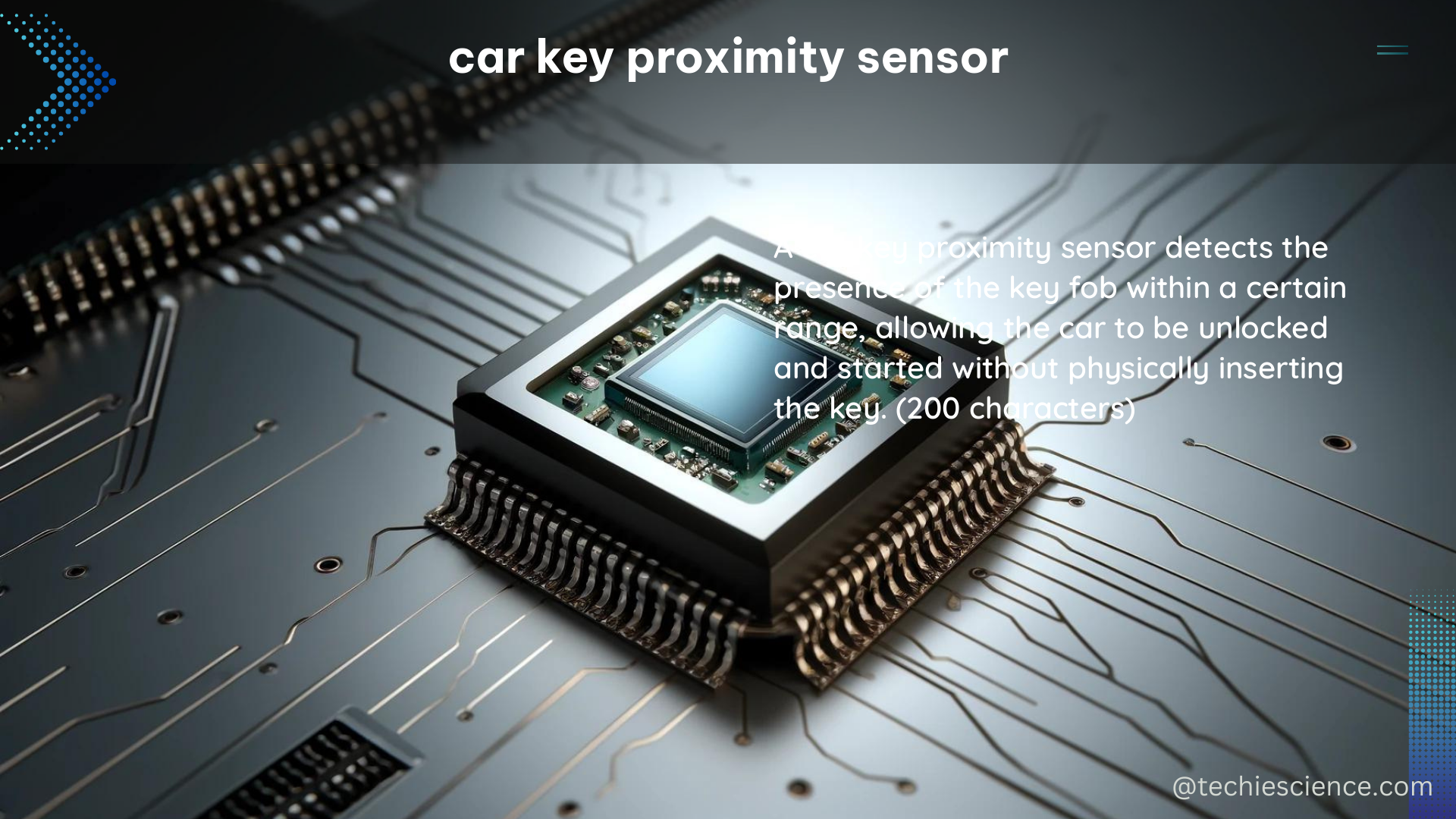The car key proximity sensor is a cutting-edge technology that allows your vehicle to detect the presence of your key fob within a specific range, typically a few feet. This innovative feature enables you to unlock and start your car without physically inserting the key into the lock or ignition. The sensor utilizes a low-power radio frequency (RF) signal to communicate with the key fob, allowing it to detect the fob even through the fabric of your pocket or bag.
Understanding the Technical Specifications
The technical specifications of a car key proximity sensor can vary depending on the make and model of your vehicle. However, there are some common characteristics that you should be aware of:
Range
The typical range of a car key proximity sensor is around 3-5 feet. This means that your car can detect the presence of your key fob within this distance, allowing you to unlock and start your vehicle without physically interacting with the key.
Frequency
The majority of car key proximity sensors operate at a frequency of either 315 MHz or 433 MHz. These frequencies are chosen to ensure reliable and secure communication between the sensor and the key fob.
Power Source
The car key proximity sensor is typically powered by a small battery, such as a CR2032 coin cell. This battery powers the RF transmitter and receiver, ensuring that the sensor can continuously monitor for the presence of the key fob.
Testing and Diagnosing the Sensor

If you suspect an issue with your car key proximity sensor, there are several tools and methods you can use to test and diagnose the problem:
Multimeter
A multimeter is a versatile tool that can be used to check the battery voltage and continuity of the sensor’s circuits. By measuring the voltage and checking for any breaks in the circuit, you can determine if the sensor is receiving power and functioning correctly.
Oscilloscope
An oscilloscope can be used to measure the strength and frequency of the RF signal being transmitted by the proximity sensor. This can help you identify any issues with the sensor’s signal, such as interference or weak transmission.
Manufacturer Diagnostic Tools
Many car manufacturers provide specialized diagnostic tools that can be used to test the car key proximity sensor and other components of the vehicle’s access and ignition system. These tools can provide detailed information about the sensor’s performance and any potential issues.
Troubleshooting Common Issues
If you’re experiencing problems with your car key proximity sensor, there are a few common issues you may encounter:
Battery Failure
The sensor’s battery can eventually run out of power, causing the sensor to stop functioning. Replacing the battery is often a simple fix for this problem.
Sensor Malfunction
Over time, the proximity sensor itself may malfunction due to wear and tear or environmental factors. In such cases, the sensor may need to be repaired or replaced.
Interference
Electromagnetic interference from other electronic devices or metal objects near the sensor can disrupt the RF signal, causing the sensor to fail to detect the key fob. Identifying and removing the source of interference can help resolve this issue.
Maintaining the Sensor
To ensure the long-term reliability of your car key proximity sensor, it’s important to follow these maintenance tips:
- Battery Replacement: Replace the sensor’s battery as recommended by the manufacturer, typically every 2-3 years.
- Cleaning: Keep the sensor and surrounding area clean and free of debris to prevent interference and ensure optimal performance.
- Avoiding Interference: Avoid placing strong magnetic or electronic devices near the sensor, as they can disrupt the RF signal.
- Regular Inspection: Periodically inspect the sensor for any signs of damage or wear, and address any issues promptly.
By understanding the technical specifications, testing and diagnosing methods, and maintenance requirements of your car key proximity sensor, you can ensure that this convenient feature continues to function reliably for years to come.
Reference:
- Car Key Proximity Sensor: How It Works and How to Fix It
- Understanding Car Key Fobs and Proximity Sensors
- Car Key Proximity Sensor DIY: A Step-by-Step Guide

The lambdageeks.com Core SME Team is a group of experienced subject matter experts from diverse scientific and technical fields including Physics, Chemistry, Technology,Electronics & Electrical Engineering, Automotive, Mechanical Engineering. Our team collaborates to create high-quality, well-researched articles on a wide range of science and technology topics for the lambdageeks.com website.
All Our Senior SME are having more than 7 Years of experience in the respective fields . They are either Working Industry Professionals or assocaited With different Universities. Refer Our Authors Page to get to know About our Core SMEs.